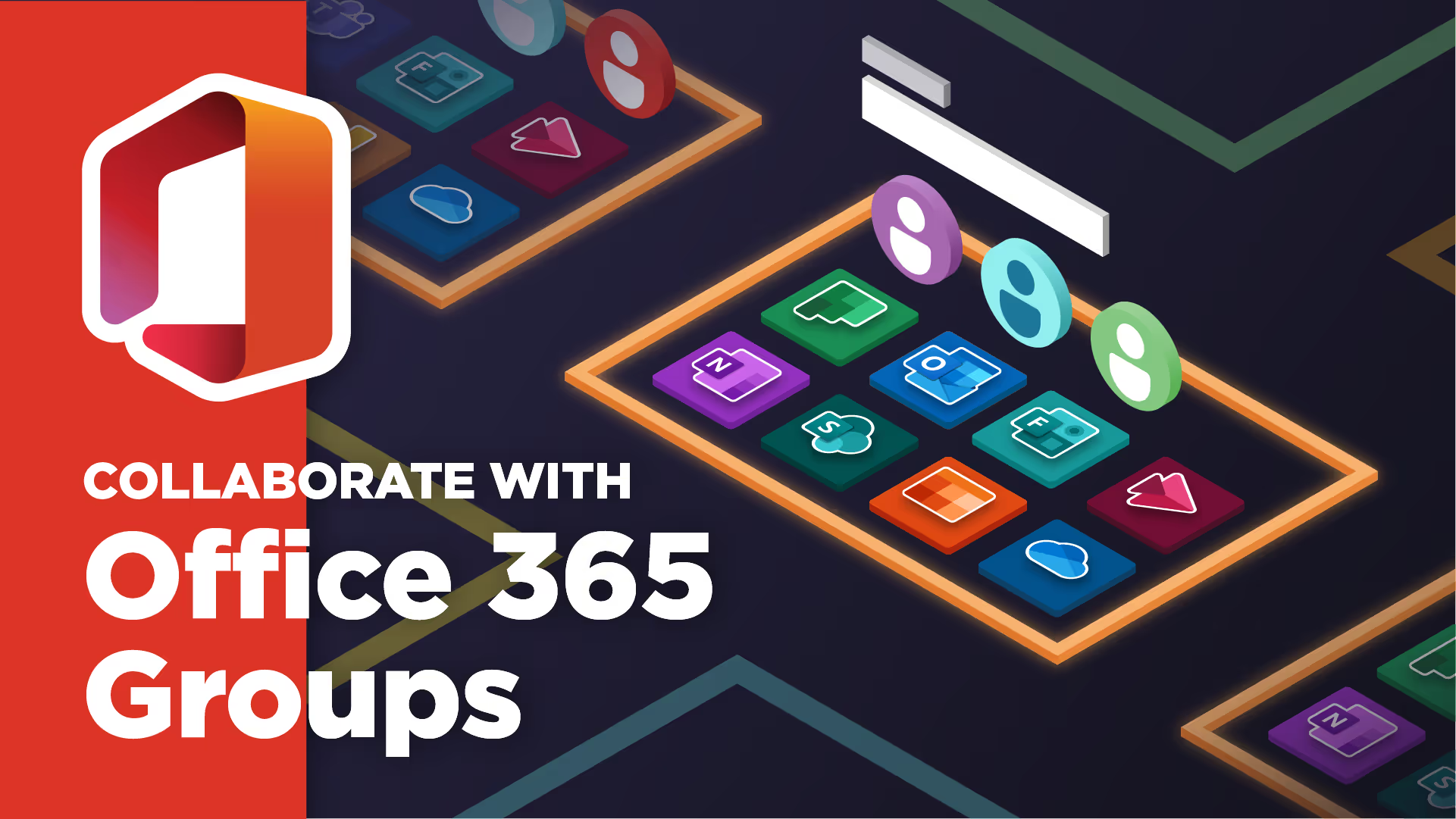All You Need To Know About Collaboration in Microsoft 365 Groups
Microsoft 365 Groups are a cross-application membership service that allows teams to work together quickly and effectively. When a group is created, a suite of associated resources is made that supply a single hub where team members can easily collaborate, communicate, schedule, and manage projects.
Creating a Microsoft 365 Group in Outlook
Microsoft 365 Groups let you more easily collaborate and share resources with a specific set of people. These resources include a shared calendar, document library, OneNote notebook, Outlook inbox, and more. Historically, distribution lists or shared mailboxes were used for this purpose, but Microsoft Groups provide a new and improved level of collaboration capabilities. Groups remove the hassle of manually assigning permissions to each team member because adding a person to a group automatically gives them the permissions of that group and the associated tools.
Depending on the purpose, Microsoft 365 groups can be created from a variety of places (Outlook, Teams, Yammer, SharePoint). These starting points provide different sets of resources for different types of purposes. This article is going to focus on creating groups from Outlook. Groups created from Outlook are organized around email and calendar, so this type of group is best served by teams needing to collaborate via email (as opposed to chat) and use a shared calendar. When you create a group, you create a central email address that can be used to invite all group members to meetings or to contact all group members easily in email. People outside of your organization can email the group email address as well, once that setting is turned on in your group’s settings.
Getting Started
If you have permissions to create groups, simply open Outlook, then select Home > New Group to be led through step-by-step instructions to create a new group. You’ll choose the name, description, and privacy settings. At the end of the set-up, be sure to check the option to send all group conversations and events to members’ inboxes. This allows group members to receive messages and invitations without having to check a separate workspace. Members can change this setting in their individual workspace. After completing the group creation form, your new group is ready to use!
Resources
Here is a snapshot of the shared resources associated with your Outlook group:

- Email – When you create a group, you’ll also create a single group email address. By sending an email to the group’s email address, any conversation happening within the group can be viewed by all members of that group within the email tab.
- Files – You can upload all files related to your group’s project and quickly access them via the Files tab within the group. A new group creates a shared document library on a SharePoint site. Organizing files this way allows for smooth collaboration and eliminates duplicate or outdated versions among team members.
- Calendar – A shared Outlook calendar to post events and appointments that affect Group members. Quickly and easily schedule team meetings by simply inviting the group email address only. When you create a new event in the group calendar, you’ll notice the group’s alias is entered automatically in the “to” line. Scheduling meetings this way allows you to invite all members of a project quickly and easily.
- Notebook – this tab brings you to the notebook specific to the associated group. Quickly reference your Team’s notes in a central place, even when you’re on the go.
- Outlook groups also creates a plan in Planner, a Stream video Portal, a Forms workspace, and a Power BI workspace (if all members have the appropriate licenses). Your group can use as many or few of the associated apps as they require.
Summary
Outlook groups provide a high level of familiarity and, therefore, a low learning curve for many project teams. Groups allow a collection of people to quickly work together remotely with a high level of communication, collaboration, scheduling, and project management. Groups are also friendly on a variety of devices (there’s even an iOS app called “Outlook Groups”), making it even easier to stay connected and informed while on the go.

SELF ASSESSMENT
Is your business getting full value from your M365 subscription?
Billions of dollars are wasted each year on underused subscriptions. Take 3 minutes to find out where your tools are driving results, and where they’re holding you back.
Find Out Now

Is Team Communication Holding You Back?
Find Out in Just 2 Minutes.
Take our quick scorecard to uncover communication gaps and hidden barriers within your team.





.avif)









